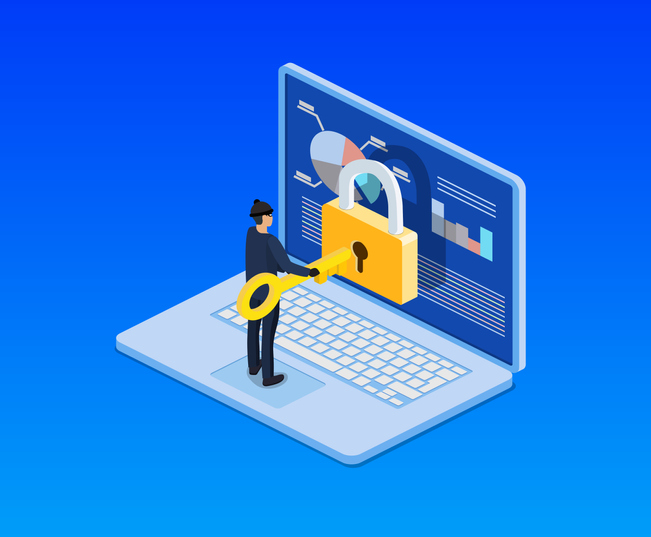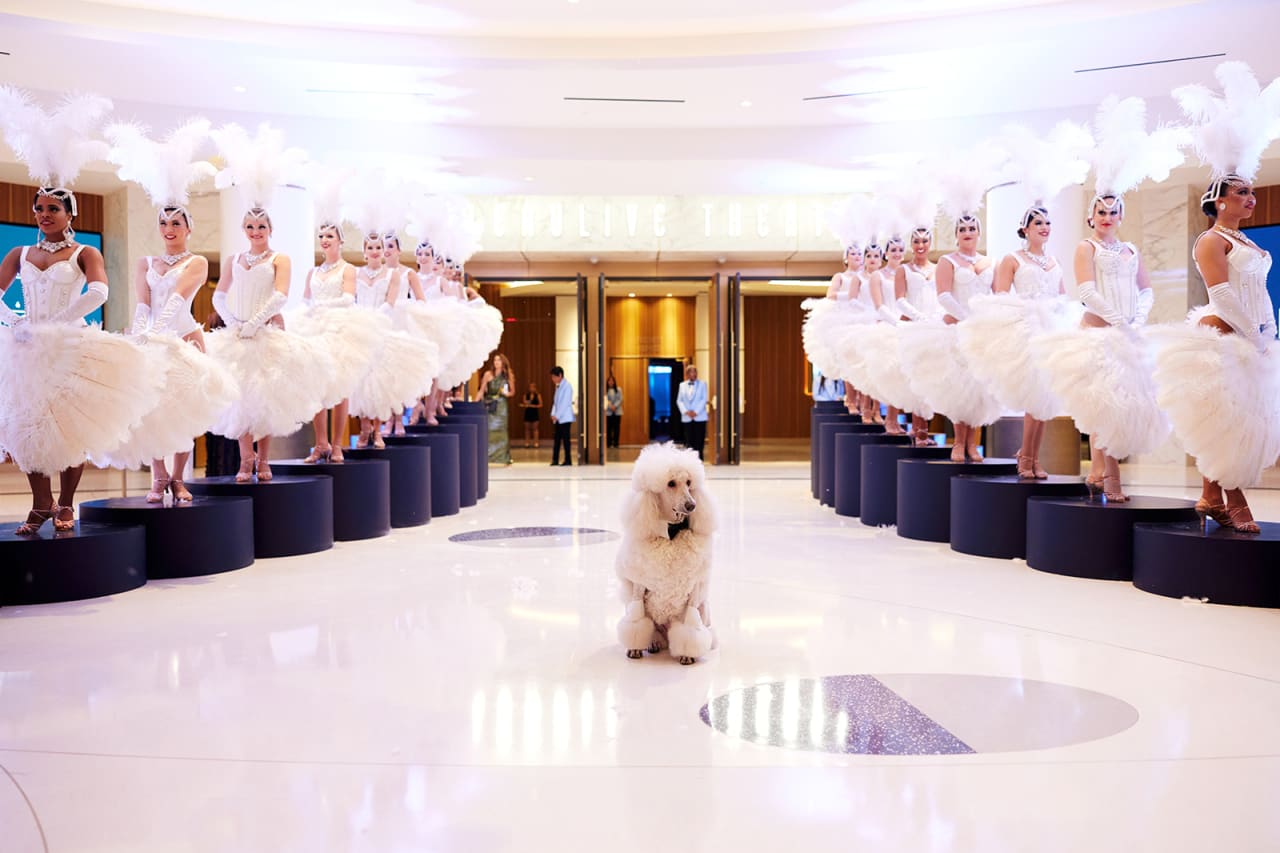Hybrid Workplaces Are A Cybersecurity Nightmare
It’s a hacker’s dream: a constantly changing mix of workers and stretched security staffs.
For many bosses and employees, there is a measure of relief in returning to the office—especially for those who have the flexibility of continuing to work from home part of the time. But for those teams working to protect their offices from hackers, the new hybrid workplaces aren’t nearly as welcome.
In a typical hybrid workplace, some employees will be in the office, some will be working from home—or spaces like coffee shops and client headquarters—and some will be cycling back and forth. Devices, too, are moving in and out of the company network, with employees bringing their laptops onto company networks and then taking them back home—where they’re much more exposed to hackers and can easily get infected with malware.
So, security chiefs are faced with the task of supporting a constantly changing mix of office workers and remote workers, and company and home devices. Whereas security teams were able to focus on protecting the remote workforce during stay-at-home orders, doing so when employees are in the office for certain days of the week and at home for others will be difficult, says Rick McElroy, principal cybersecurity strategist at VMware Inc.’s Security Business Unit.
“It’s hard to maintain a security staff that looks one way in the data centre or one way in an office, and then one way for remote employees,” he says.
Making things even worse: Security teams have been stretched thin by the demands of the pandemic. For the past year, they’ve had to make sure everyone is equipped to work from everywhere and can use critical tools such as virtual meeting rooms. Things will only get tighter now that businesses are hiring more workers and launching into new projects they had put on hold during the pandemic.
The issues associated with hybrid work follow a bruising year for companies that were caught flat-footed by the coronavirus pandemic, many of which had to move to a fully remote model for the first time—and often almost overnight. Hackers were quick to realize that insecure home networks and a lack of security controls typically found on corporate networks could work to their benefit. The World Economic Forum estimates that cyberattacks jumped 238% globally between February and April 2020.
Those attacks have continued to hammer corporate networks, and in many cases target the technologies that companies implemented to quickly provide for remote work, such as cloud services. A report from Verizon Communications Inc., published in May 2021, found that attacks against cloud-based email, remote desktop applications and similar technologies designed to assist with remote work all increased over 2020.
“I think many organizations probably rushed [the move to remote work] and maybe haven’t done it in the right way,” says Phil Venables, a vice president at Alphabet Inc.’s Google and the chief information security officer of its cloud unit.
Now, the task gets even harder, as some workers return to the office, some stay home and some do both. Here’s a look at some of the challenges businesses are facing as they make this transition—and how they’re dealing with them.
Catching up on patches
One of the most basic problems security teams face is getting their machines up to speed with the latest software patches. These updates are released constantly to ensure that security vulnerabilities aren’t left open for hackers to exploit. If companies miss just one of these, they can pay a high price in terms of their vulnerability.
Now security chiefs are wary of the number of devices that may have sat idle in offices for over a year—turned off and unable to download patches—while employees have been absent, says Jadee Hanson, chief information security officer at cybersecurity firm Code42 Software Inc. And we’re not talking about just one patch, but potentially dozens or hundreds.
Of equal concern are devices that have been used by employees during remote working. Because of the extended time away from the office, users may have gotten negligent about installing patches, leaving machines vulnerable when they reconnect to the corporate network, says Ms. Hanson, a former security chief at Target Corp.
“We push a lot of the patching stuff down to our end users,” says Ms. Hanson. “But if they have not connected to the network in a long period of time, we just don’t know what’s left unpatched out there.”
Keeping personal devices sequestered
When it comes to employees’ work-from-home devices, it’s not just a lack of patches that’s a problem. It’s the fact that many employees have gotten lax about security practices while stuck at home for so long.
Email-security firm Tessian Ltd. published a survey of 2,000 workers in December, for instance, that found over half had connected work devices to public wireless networks, which are often regarded as insecure.
Similarly, a survey of over 3,000 workers published by AT&T Inc. in March found that over half of respondents had used work devices for personal business such as online banking and downloading apps, and over a third had connected them to smart home devices such as speakers.
Bringing those machines immediately into a company network, where they might spread infections and give hackers a beachhead, could be dangerous. Instead, the safest thing may be to have personal devices log into a “quarantine network,” says Mr. McElroy of VMware.
Under this model, he says, user devices would connect to a network that is separated from corporate systems until security staff can ensure the devices are free of malware and appropriately patched.
Security staff must also be vigilant for deeper threats that may be waiting in employee devices—such as malware that can stay asleep for some time before it awakes and allows for further infection.
Will quarantining work on a continuing basis? Quarantine networks may be difficult to manage if workers are in and out of an office frequently and have to continually quarantine devices, rather than doing so once during a full office return, Ms. Hanson of Code42 says.
“If somebody is doing 100% overnight, that might make sense” to go with a quarantine, she says.
Removing the human factor
To some security chiefs, though, the hybrid model has so many risks that we need to rethink the way we approach network safety entirely. Imagine if we had hybrid work from the very beginning. Would we really be treating cybersecurity the same way we do now?
Not likely, the security chiefs say. The usual ways of training employees to guard against hackers often don’t work, they say, so we should take that responsibility out of workers’ hands—and create defenses that work behind the scenes as much as possible.
“I think it’s insane that we have basically said that we are going to train people to filter phishing emails. We didn’t train people to filter spam emails, we just invented spam filters to take the problem away,” says Tim Sadler, Tessian’s CEO.
So, what’s the alternative? One possibility is a concept called zero trust.
To understand zero trust, consider the traditional type of network security. Usually, it focuses on building a perimeter around the company network to keep intruders out—think of firewalls.
The problem is that hybrid work makes it very easy for intruders to breach those outer defences, because employees working at home aren’t as vigilant as they should be. And because traditional security is focused on keeping hackers out, it’s tough to stop them once they get in—so the bad guys can run wild.
Systems that are more vigilant use multifactor authentication: Users might have to confirm their identity rigorously when they sign in to the network, such as entering a password along with something else, like responding to a message on their phone.
Zero trust takes that a step further. Even after users pass the authentications, security checks constantly exchange information in the background to verify whether users can access certain systems or files, rather than assuming that because they passed through the gateway, they should be allowed free movement.
By doing it this way, security staff assume hackers are already inside a company’s digital walls, and their job is to make it difficult for them to wreak havoc. And, because these processes are usually automated, zero trust doesn’t have to rely on users to make it all work.
At Microsoft Corp., CISO Bret Arsenault’s team has built out a zero-trust system to check employees’ identities and devices at every turn, including through multifactor authentication that can include face, eye and fingerprint scans. Once the tools verify Microsoft users, he says, they will push employees directly to cloud-based apps such as the Office365 workplace suite, rather than onto a corporate network.
Security veterans such as William O’Hern, the chief security officer at AT&T, say that improving identity management and other core zero-trust concepts can go a long way toward foiling hackers, who often rely on compromised credentials such as breached usernames and passwords. Around 61% of attacks during 2020 involved this information to some degree, Verizon said in its May report.
“If I had one thing to tell everyone to do, it would be to focus on strong identity proofing, not only of individuals but of [devices], too,” Mr. O’Hern says.
 Copyright 2020, Dow Jones & Company, Inc. All Rights Reserved Worldwide. LEARN MORE
Copyright 2020, Dow Jones & Company, Inc. All Rights Reserved Worldwide. LEARN MORE
This stylish family home combines a classic palette and finishes with a flexible floorplan
Just 55 minutes from Sydney, make this your creative getaway located in the majestic Hawkesbury region.
As Paris makes its final preparations for the Olympic games, its residents are busy with their own—packing their suitcases, confirming their reservations, and getting out of town.
Worried about the hordes of crowds and overall chaos the Olympics could bring, Parisians are fleeing the city in droves and inundating resort cities around the country. Hotels and holiday rentals in some of France’s most popular vacation destinations—from the French Riviera in the south to the beaches of Normandy in the north—say they are expecting massive crowds this year in advance of the Olympics. The games will run from July 26-Aug. 1.
“It’s already a major holiday season for us, and beyond that, we have the Olympics,” says Stéphane Personeni, general manager of the Lily of the Valley hotel in Saint Tropez. “People began booking early this year.”
Personeni’s hotel typically has no issues filling its rooms each summer—by May of each year, the luxury hotel typically finds itself completely booked out for the months of July and August. But this year, the 53-room hotel began filling up for summer reservations in February.
“We told our regular guests that everything—hotels, apartments, villas—are going to be hard to find this summer,” Personeni says. His neighbours around Saint Tropez say they’re similarly booked up.
As of March, the online marketplace Gens de Confiance (“Trusted People”), saw a 50% increase in reservations from Parisians seeking vacation rentals outside the capital during the Olympics.
Already, August is a popular vacation time for the French. With a minimum of five weeks of vacation mandated by law, many decide to take the entire month off, renting out villas in beachside destinations for longer periods.
But beyond the typical August travel, the Olympics are having a real impact, says Bertille Marchal, a spokesperson for Gens de Confiance.
“We’ve seen nearly three times more reservations for the dates of the Olympics than the following two weeks,” Marchal says. “The increase is definitely linked to the Olympic Games.”

Getty Images
According to the site, the most sought-out vacation destinations are Morbihan and Loire-Atlantique, a seaside region in the northwest; le Var, a coastal area within the southeast of France along the Côte d’Azur; and the island of Corsica in the Mediterranean.
Meanwhile, the Olympics haven’t necessarily been a boon to foreign tourism in the country. Many tourists who might have otherwise come to France are avoiding it this year in favour of other European capitals. In Paris, demand for stays at high-end hotels has collapsed, with bookings down 50% in July compared to last year, according to UMIH Prestige, which represents hotels charging at least €800 ($865) a night for rooms.
Earlier this year, high-end restaurants and concierges said the Olympics might even be an opportunity to score a hard-get-seat at the city’s fine dining.
In the Occitanie region in southwest France, the overall number of reservations this summer hasn’t changed much from last year, says Vincent Gare, president of the regional tourism committee there.
“But looking further at the numbers, we do see an increase in the clientele coming from the Paris region,” Gare told Le Figaro, noting that the increase in reservations has fallen directly on the dates of the Olympic games.
Michel Barré, a retiree living in Paris’s Le Marais neighbourhood, is one of those opting for the beach rather than the opening ceremony. In January, he booked a stay in Normandy for two weeks.
“Even though it’s a major European capital, Paris is still a small city—it’s a massive effort to host all of these events,” Barré says. “The Olympics are going to be a mess.”
More than anything, he just wants some calm after an event-filled summer in Paris, which just before the Olympics experienced the drama of a snap election called by Macron.
“It’s been a hectic summer here,” he says.

AFP via Getty Images
Parisians—Barré included—feel that the city, by over-catering to its tourists, is driving out many residents.
Parts of the Seine—usually one of the most popular summertime hangout spots —have been closed off for weeks as the city installs bleachers and Olympics signage. In certain neighbourhoods, residents will need to scan a QR code with police to access their own apartments. And from the Olympics to Sept. 8, Paris is nearly doubling the price of transit tickets from €2.15 to €4 per ride.
The city’s clear willingness to capitalise on its tourists has motivated some residents to do the same. In March, the number of active Airbnb listings in Paris reached an all-time high as hosts rushed to list their apartments. Listings grew 40% from the same time last year, according to the company.
With their regular clients taking off, Parisian restaurants and merchants are complaining that business is down.
“Are there any Parisians left in Paris?” Alaine Fontaine, president of the restaurant industry association, told the radio station Franceinfo on Sunday. “For the last three weeks, there haven’t been any here.”
Still, for all the talk of those leaving, there are plenty who have decided to stick around.
Jay Swanson, an American expat and YouTuber, can’t imagine leaving during the Olympics—he secured his tickets to see ping pong and volleyball last year. He’s also less concerned about the crowds and road closures than others, having just put together a series of videos explaining how to navigate Paris during the games.
“It’s been 100 years since the Games came to Paris; when else will we get a chance to host the world like this?” Swanson says. “So many Parisians are leaving and tourism is down, so not only will it be quiet but the only people left will be here for a party.”
This stylish family home combines a classic palette and finishes with a flexible floorplan
Just 55 minutes from Sydney, make this your creative getaway located in the majestic Hawkesbury region.






















